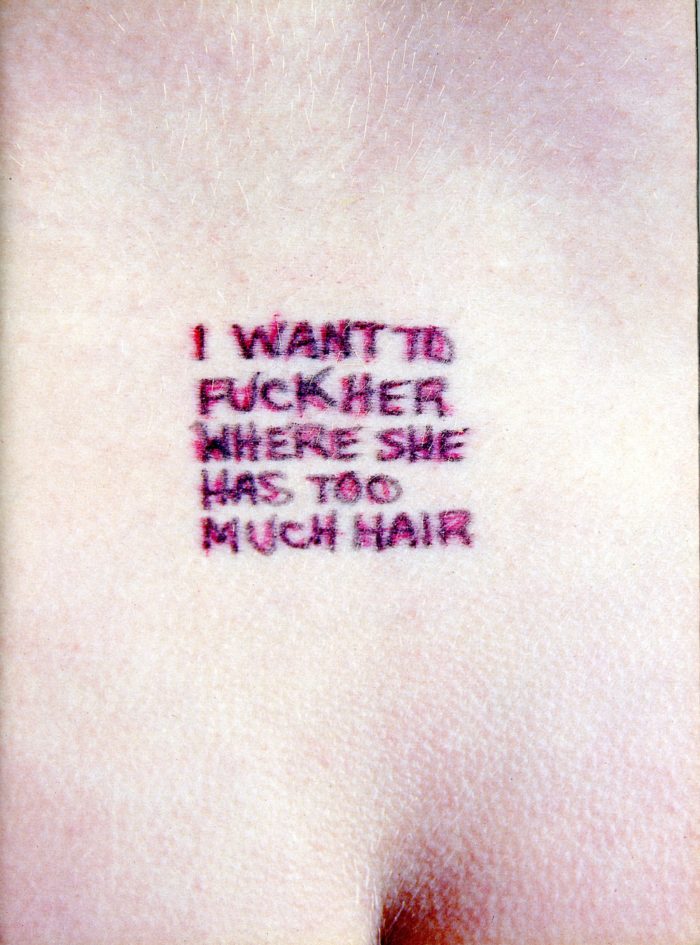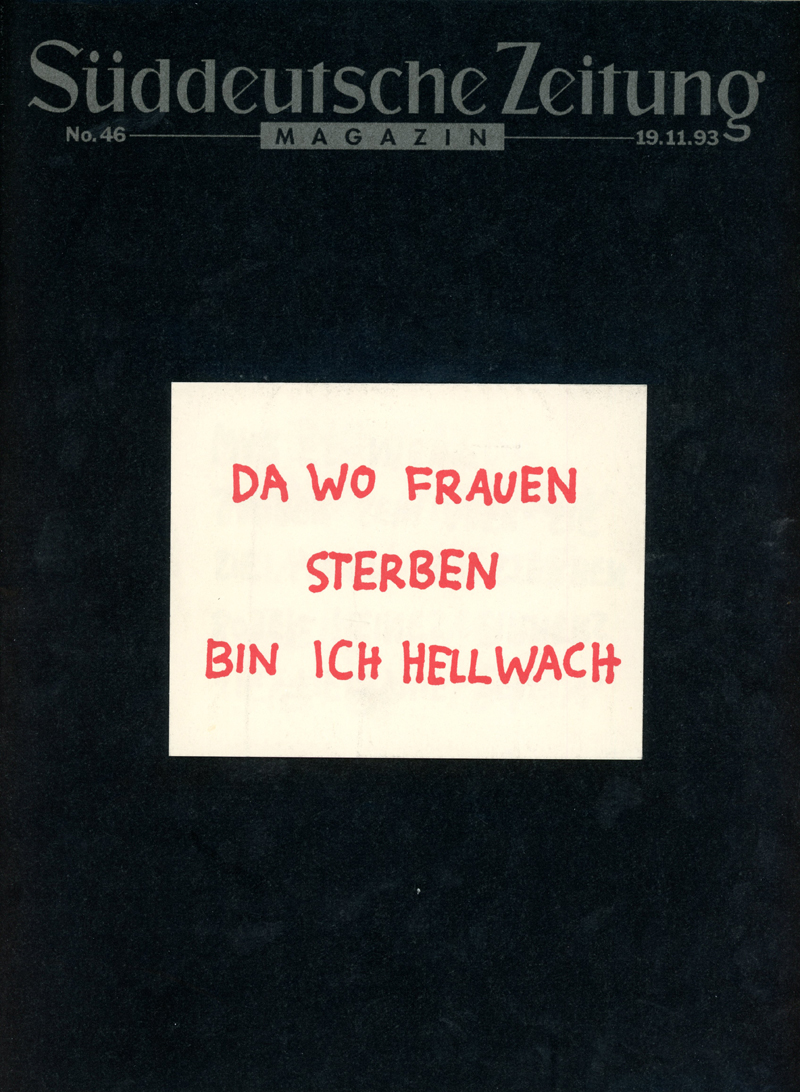From our newsletter archives. Originally published September 2, 2021.

Selected issues of the German Süddeutsche Zeitung (SZ) magazine from the 1990s are today coveted collector items because of the publication’s radical decision to give famous artists editorial control in the design of the magazine’s cover, as well as lengthy picture spreads featuring whatever images they chose. Based in Munich, SZ was Bavaria’s leading newspaper and the magazine was part of its Sunday edition. Each artist’s section included an interview and generally totaled 40 pages.
For artists, SZ Magazin provided both a unique challenge and an opportunity. Offered the possibility of reaching nearly one million Germans, they were faced with an important decision of what to say and how to translate their personal approach to art-making onto the printed page. Gallery 98 features here issues of SZ Magazin created by three media-savvy American artists: Jenny Holzer, Jeff Koons and Richard Prince.
Jeff Koons, Baby and Bucket; Embrace Your Past, SZ Magazin, 1992
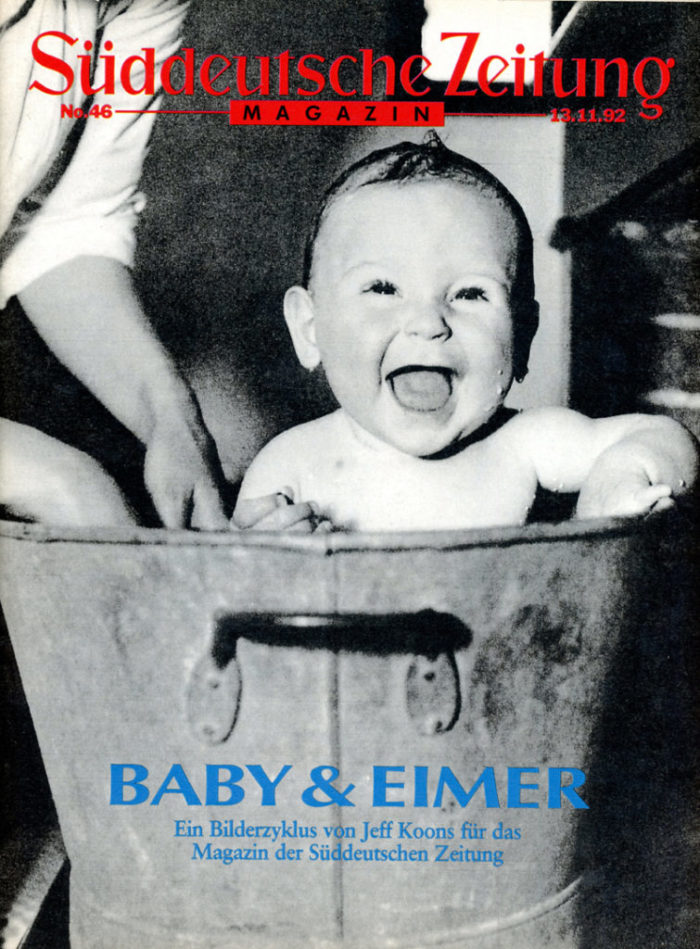
Süddeutsche Zeitung Magazin (Germany), Jeff Koons, Baby and Bucket: 35 Pages By The Artist, Magazine, 1992
Size: 9 x 12 inches
$150
In 1992 Jeff Koons was temporarily living in Munich with his wife Ilona Staller (aka La Cicciolina) and their newly born child. These personal circumstances were clearly the inspiration for his picture story, a collection of images of babies, kittens and monkeys, perhaps assembled from SZ’s picture files. The spread reflects Koons’ eye for the sentimental clichés of bourgeois life. In the accompanying interview (in German) he explains his creative methodology: “The idea of direct, banal implementation appealed to me… Art is communication… I want to be quick and fresh.”
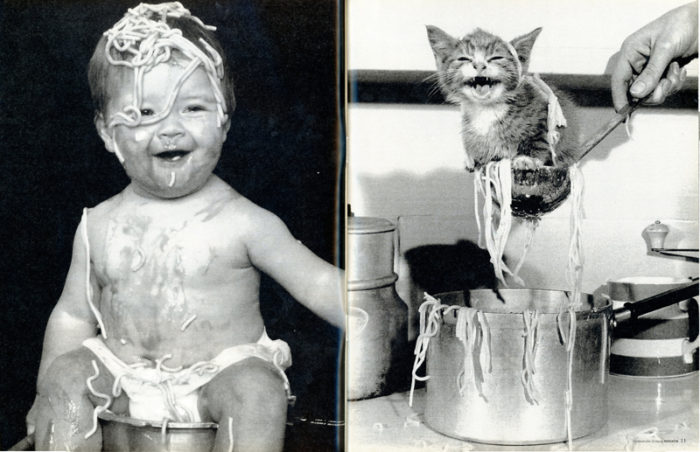

Richard Prince, Passion Play; I couldn’t find a parking space. So I bought a parked car, SZ Magazin, 1996

Süddeutsche Zeitung Magazin (Germany), Richard Prince, Passion Play: 37 Pages By The Artist, Magazine, 1996
Size: 9 x 12 inches
Richard Prince’s collaboration with SZ coincided with an exhibition at the Haus der Kunst in Munich at a point of personal and professional reflection in his life. Famous for his use of appropriated popular media images (e.g. The Marlboro Man), Prince’s “Passion Play” drawings reflect a completely different type of art-making. Originally made while Prince was in therapy in the early 1970s, the drawings were meant to convey feelings that words could not express. They were resurrected as the basis for new work in his Munich exhibition, which also (like his SZ picture story) included more familiar works like his paintings featuring written jokes as subject matter.

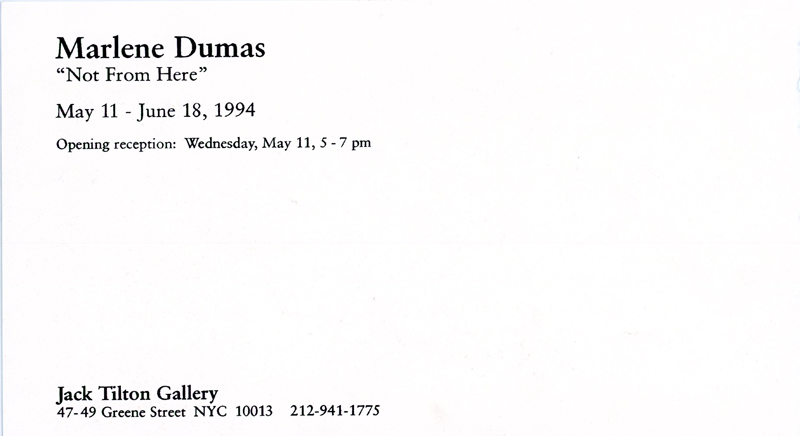
Jenny Holzer, Sex Murder; Death Is Not a Hygienic Matter, SZ Magazin, 1993
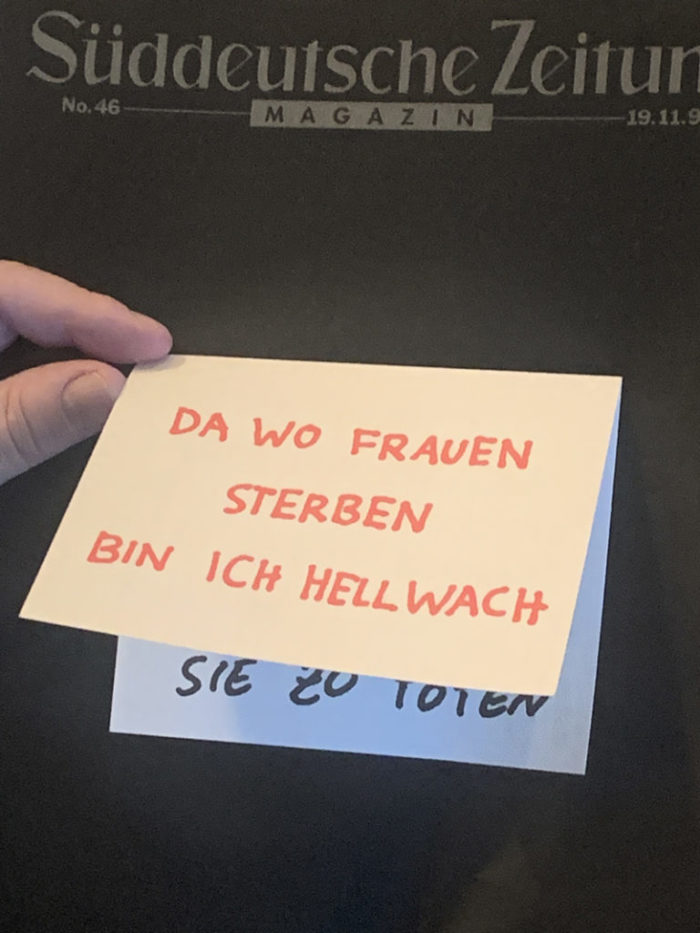
Jenny Holzer, Sex Murder: 40 Pages By The Artist, Süddeutsche Zeitung Magazin (Germany), Magazine, 1993
Size: 9 x 12 inches
$200
Translation from the front of the card: “Where women die I am wide awake.” The phrases on the inside of the card read in translation: “She fell on the floor of my room. She wanted to be clean when dying but she was not… The color of her open insides provokes me to kill her.”
Jenny Holzer found her voice confronting the atrocities in the Bosnian War, which at the time was taking place not too far south of Germany. Titling her work Lustmord (Sex Murder), Holzer addresses the systemic rape of women, with fragmented text reflecting the perspectives of the perpetrator, the rape victim and witnesses. She begins with the disturbing thoughts of the rapist murderer handwritten in German on a lift-up card attached to the magazine cover. Inside Holzer features close up photographs of phrases in English and German written in ink on naked flesh.
